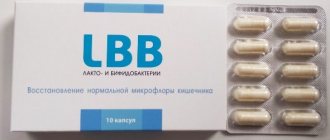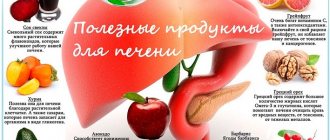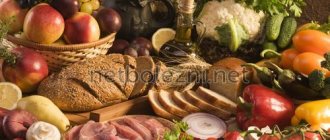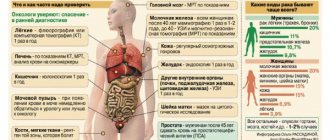lactobacilli
prebiotics
probiotics
metaprebiotics
Human digestion, regardless of gender and age, cannot be comfortable without maintaining the balance of beneficial and opportunistic microorganisms living in the intestinal lumen. Beneficial microflora is represented by bifidobacteria and lactobacilli, which not only form up to 70% of the general immunity, but also take an active part in the digestion process, and also synthesize certain biologically active substances and vitamins. Under the influence of various external and internal negative factors, the balance of the intestinal microbiota can be disrupted, which entails a number of negative consequences.
Concept of human microbiota
Today, the concept of “microbiota” is coming into use and more and more people are becoming interested in what it is and what to do with this very microbiota. Previously, it was believed that man had been completely studied, scientists had deciphered the human genome and it seemed that now everything was known about us. However, for a long time the fact was lost sight of that we live in community with a huge microcosm inside us. Only in 2012, scientists published the “Human Microbiome” project, the results of which revealed that over 10 thousand different types of microorganisms live in the human body.
Of the microorganisms that inhabit us, several classes have been identified - helminths, fungi, protozoa, bacteria and viruses. The composition of the microbiota varies depending on the organs and systems that are colonized: skin microbiota, vaginal microbiota, urinary tract microbiota, respiratory tract microbiota, ENT microbiota and intestinal microbiota, also called gut microbiota, is by far the most voluminous.
The gut microbiota in the gastrointestinal tract is the largest in the body. It contains one hundred billion microorganisms, which exceeds the number of cells in the human body by 5–10 times. It is extremely important for the normal functioning of the intestinal immune system. It receives resources for its own metabolism from our food (in particular, from dietary fiber). At the same time, the intestinal microbiota is directly involved in the process of food digestion (fermentation, absorption of nutrients, synthesis of vitamins, etc.). It is interesting that colonization by microorganisms occurs during intrauterine development and is transmitted from mother to baby, which is why proper and nutritious nutrition during pregnancy is extremely important.
Microbiota can be divided into parietal and luminal. The luminal one is located in the lumen of the gastrointestinal tract and does not interact with the mucosa. It feeds on insoluble dietary fiber, to which it attaches, digests it and delivers micro- and macronutrients to the parietal microbiota. The parietal microbiota constantly lives in the parietal mucus of the gastrointestinal tract. The substrate for its life activity is soluble dietary fiber. This is the type of microbiota that is inherited and cannot be influenced in any way.
In this article we will consider groups of bifidobacteria and lactobacilli, which are part of both luminal and parietal microbiota.
Soybeans
Soybean is an annual herbaceous plant from the Legume family.
Soy is famous for its high content of complete protein, B vitamins, as well as iron, calcium and essential fatty acids. This cholesterol-free product has taste properties that make it possible to make a wide range of different meat and dairy products from soy.
Today there is a lot of controversy regarding the benefits and harms of soy. I would like to immediately note that only natural soy is useful, which in terms of the amount of protein it contains is superior to such products as fish, eggs, meat (and soy proteins are absorbed by 90 percent, which cannot be said about animal proteins).
Benefits of soy
- Preserving the beauty of skin and hair.
- Protecting the body from the negative effects of the environment.
- Regulation of cholesterol levels.
- Reducing the risk of developing heart and vascular diseases.
- Improving kidney function in diabetes.
- Normalization of fat metabolism.
- Promoting weight loss.
- Strengthening the immune system.
- Normalization of metabolism.
- Improving the functioning of brain cells.
- Strengthening the nervous system.
- Binding and removal from the body of radionuclides, as well as heavy metal ions.
Harm of soy
- Hormonal imbalance.
- Suppression of the functions of the endocrine system (especially for children).
- Increased risk of miscarriage.
- Cerebrovascular accident.
- Increased risk of developing Alzheimer's disease.
But such harm to the body is caused by the consumption of genetically modified soybeans, which today are present in a large number of products that we consume daily.
What foods contain soy?
Food sources of soy:
- miso (thick soybean seed paste);
- natto (boiled soybean seeds);
- soy flour;
- soybean oil;
- soy milk;
- soy meat (prepared on the basis of low-fat soy flour);
- soy sauce;
- pace;
- tofu;
- Yuba (dried foam skimmed from the surface of soy milk).
If we talk about genetically modified soybeans, it is present in sausages, semi-finished meat products (dumplings, ravioli, pancakes with meat), dairy drinks, mayonnaise, margarine, pasta, chocolate, candies and even in baby food products. The presence of soy in the product is indicated by markings on the label E479 and E322.
Concept and difference between bifidobacteria and lactobacilli
Despite the fact that bifidobacteria and lactobacilli are united by the benefits they bring to the body, there are characteristic differences between the two species. These differences include
:
- Percentage.
When the balance of the intestinal microbiota is maintained, about 95% is bifidobacteria, and only 5% is represented by lactobacilli. - Area of life activity.
Bifidobacteria live primarily in the lumen of the large intestine, while lactobacilli are located in the large intestine, on the mucous membrane of the vulva and in the vagina in women, as well as in the oral cavity.
Bifidobacteria are gram-positive anaerobic microorganisms that do not require oxygen to maintain their vital functions. One of the main functions of these microorganisms is to maintain parietal digestion. In addition, bifidobacteria create a natural barrier in the intestinal cavity and prevent the penetration of pathogens and toxins into the internal environment. Bifidobacteria live with us in a certain symbiosis: they receive nutrients from us, and in return produce the necessary amino acids, proteins and B vitamins, and also ensure normal absorption of proteins and fats, promote the absorption of vitamin D, calcium and iron.
Lactobacilli can equally exist both in the presence of oxygen and in its absence. One of the main functions of lactobacilli is the production of the enzyme lactase, which breaks down milk sugar (lactose). Lactobacilli form a natural immune defense, accelerate the process of epithelial regeneration, and also take an active part in the process of phagocytosis. Both types of microorganisms are beneficial to the human body, so it is very important to take care of maintaining a balance between them and opportunistic bacteria.
Formation of intestinal microbiocenosis and immune system
As you know, the largest immune organ in humans is the intestine. About 70–80% of the body’s immunocompetent cells are localized in gut associated lymphoid tissue (GALT) [6]. The main role of GALT is to maintain immune homeostasis, which consists, on the one hand, in suppressing the response to food proteins and commensal bacteria, and on the other, in providing protection against pathogens.
The formation of the adaptive immune system begins at birth and is closely related to microbial colonization of the newborn child’s body. Natural colonization of the intestine coincides in time with the onset of enteral intake of food antigens and triggers the final stages of maturation of the immune system. Intestinal microbiota (IM) is involved in the launch and subsequent activation of both the synthesis of nonspecific humoral defense factors - lysozyme, properdin, complement, and cellular mechanisms, in particular phagocytosis. CM stimulates the maturation of the intestinal lymphoid apparatus, the synthesis of secretory IgA (sIgA), and the production of cytokines and interferons by colonocytes [7]. Colonization of the intestine with healthy microbiota maintains an adequate state of innate immunity and promotes the formation of adaptive immunity [8].
The fetal immune system is characterized by a slight shift towards a Th2 response in order to protect against maternal antibodies [9]. The formation of intestinal microbiocenosis occurs in parallel with a change in subpopulations of T lymphocytes from Th2 cells, which predominate in the newborn, to Th1 cells [10]. The immunomodulatory effect of CM, which provides immunological tolerance to it, is determined by the influence of elements of the bacterial cell wall on the differentiation processes of T-lymphocytes, as a result of which the subpopulation of Th1-lymphocytes increases, producing, in particular, interferon γ, interleukins-10, -12, providing anti-infective immune response, with a decrease in the number of the subpopulation of Th2 lymphocytes that determine atopic reactions. In addition, the subpopulation of Th3 lymphocytes, which control the development of immunological tolerance, increases [7, 10]. At the same time, researchers note the extreme plasticity of the immune response, which, in particular, depends on the conditions of exposure to the antigen [9].
Thus, disruption of the intestinal microbiocenosis leads to a change in the Th1/Th2 balance towards the predominance of Th2 cells, which contributes to the weakening of anti-infective protection and an increased risk of allergic reactions [10].
Signs of lacto- and bifidobacteria deficiency
Under the influence of external and internal negative factors, the balance between beneficial and opportunistic intestinal microbiota may be disrupted. This condition is called dysbiosis. In addition to unpleasant symptoms, intestinal dysbiosis can cause negative consequences from the digestive system. The main symptoms of intestinal dysbiosis include:
:
- Increased gas formation in the intestines, flatulence.
- Alternating constipation and diarrhea.
- Diffuse or localized abdominal pain.
- Nausea.
- Increased irritability, sleep disturbance, apathy.
- In addition, with intestinal dysbiosis, the condition of the skin and hair worsens due to the development of vitamin deficiency.
If for some reason there is a decrease in beneficial microflora, other inhabitants of the intestines - fungi, bacteria, helminths - take their place with great pleasure. It is also worth mentioning the reasons leading to changes in the composition of the microbiota
:
- long-term use of medications (against this background, iatrogenic dysbiosis develops);
- surgical intervention;
- improper diet;
- frequent exposure to stressful situations;
- infections in the intestines;
- various diseases of the esophagus (for example, gastritis, hepatitis);
- metabolic disease;
- progressive diseases of the thyroid gland.
Also, the nature of nutrition significantly influences the quantitative composition of the same lactobacilli. With an excess of simple carbohydrates, fatty and fried foods, and with a deficiency of fiber, the beneficial microflora is significantly reduced.
Reception features
Despite the variety of drugs with lactobacilli and bifidobacteria for the intestines, there are general rules of administration that allow you to get the maximum benefit from taking these medications. These rules include:
- The frequency of taking prebiotics is 3-4 times a day, while the total duration of the course of treatment is individual for each person. As a rule, it is necessary to continue treatment until the symptoms of intestinal dysbiosis disappear. Prebiotics are often prescribed for prophylactic purposes, to stimulate a person’s own intestinal microflora.
- Probiotics must be taken 3-4 times a day, 20-40 minutes before meals, with a course of treatment ranging from 14 to 21 days. Bifidobacteria and lactobacilli to restore microflora are prescribed for therapeutic purposes in cases of already developed dysbacteriosis. If dysbiosis has developed during antibiotic therapy, then probiotics should be taken from the first day of using antibacterial agents.
- If you have increased stomach acidity, before taking probiotics you should drink any antacid drug or 1 glass of alkaline mineral water.
How to compensate for the deficiency of bifidobacteria and lactobacilli
A mandatory and most important condition for intestinal dysbiosis and deficiency of beneficial microflora is the elimination of the causes of its occurrence, restoration of normal intestinal microflora and effective therapy of the underlying disease. To do this, it is necessary, first of all, to remove pathogenic microbes from the intestines, biliary tract and other organs, it is important to eliminate inflammation in the intestines, normalize the motor activity of the intestines and create normal acidity there, as well as stimulate the growth of beneficial microflora and suppress opportunistic and pathogenic flora. It is worth paying attention to general and local immunity and working to strengthen it.
We recommend
“TOP healthy products for children’s health: nutritional features, vegetarianism” Read more
To compensate for the deficiency of bifidobacteria and lactobacilli, there are several ways of working. One of them is taking probiotics. The term “probiotics” means a community of two organisms that promotes the life of both partners. Probiotics are live microorganisms that have a beneficial effect on human health by normalizing their intestinal microflora. Probiotics are widely used as dietary supplements in yogurt and other dairy products. The microorganisms that make up probiotics are non-pathogenic, non-toxic, and remain viable during storage.
Probiotics include
:
- preparations containing living microorganisms and their structural components;
- preparations containing a complex of living microorganisms, from structural components and metabolites in various combinations;
- preparations based on living genetically engineered strains of microorganisms;
- functional food products that can restore the microecology of the host organism.
Moving along the digestive tract, microorganisms retain their viability and provide a temporary beneficial effect on the intestinal microflora, modifying its composition and metabolic activity. Probiotics can be included in the diet as dietary supplements in the form of powders containing bifidobacteria, lactobacilli, and combinations thereof.
The effectiveness of probiotics depends on many factors, such as their composition, the state of the intestinal microflora, lifestyle and much more. The most commonly prescribed and most popular probiotics are made from lacto- and bifidobacteria.
There are a number of requirements for probiotics
:
- they should not cause side effects when taken for a long time;
- must have a positive effect on the human body;
- must have colonization potential, that is, remain in the digestive tract until a positive effect is achieved;
- must have stable clinical efficacy and ensure simplicity of production technology.
The next way to work to normalize the intestinal microflora is to take prebiotics. Prebiotics include food components that are indigestible in the upper digestive tract and help improve human health by selectively stimulating the growth and metabolic activity of one or more groups of beneficial bacteria (lactobacteria, bifidobacteria) in the colon. In order for a food component to be classified as a prebiotic, it must not be hydrolyzed by digestive enzymes and absorbed in the upper digestive tract, however, it must be a substrate for bifidobacteria and lactobacilli that populate the human large intestine. Prebiotics are not drugs.
Dietary fiber and oligosaccharides and their derivatives have prebiotic properties. Fructo-oligosaccharides are low molecular weight carbohydrates, consisting of 3-10 molecules of monosaccharides, of which at least two molecules are fructose. Fructo-oligosaccharides are found in artichoke, onion, chicory, garlic, corn flakes, oatmeal, rye, chicory, and beer. Inulin, galacto-oligosaccharides, and raffinose (found in beans) have prebiotic properties. Components of dietary fiber - pectin, hemicellulose - also have prebiotic properties.
Fructo-oligosaccharides cause a more than 10-fold increase in the levels of bifidobacteria and lactobacilli in feces and a significant decrease in the numbers of clostridia and enterobacteria. In turn, increased levels of bifidobacteria and lactobacilli lead to suppression of the growth and reproduction of salmonella, listeria, campylobacter, shigella and vibrio.
Small amounts of oligosaccharides are found in the milk of all mammals, but breast milk contains about 130 different oligosaccharides that act as a type of soluble dietary fiber. Oligosaccharides in breast milk have a number of protective functions that determine the benefits of breastfeeding. They increase the level of bifidobacteria and affect the pH of the colon contents.
As additives to functional products, a combination of probiotics and prebiotics can be used - synbiotics, which have a beneficial effect on the health of the host organism, improving the survival and survival in the intestines of live bacterial additives and selectively stimulating the growth and activation of metabolism of endogenous lacto- and bifidobacteria.
Alkaloids
Alkaloids are organic substances that contain nitrogen.
There are a huge number of such substances in nature, they have different chemical formulas and have different effects on the human body. Most alkaloids have a bitter taste. Alkaloids are produced by the breakdown of amino acids.
Benefits of alkaloids
- Elimination of pain syndrome.
- Relieving spasms.
- Helping to quickly stop bleeding.
- Decreased blood pressure.
- Calming the nervous system.
- Protecting the body from the action of pathogens.
- Inhibition of the development of tumors in the body.
- Elimination of symptoms of intoxication.
Important!
There are alkaloids that are dispensed only as prescribed by a doctor because they are drugs or dangerous poisons (such alkaloids include, for example, morphine and cocaine).
What foods contain alkaloids?
Alkaloids are found primarily in plants, and different parts of them may contain different amounts. Moreover, one alkaloid may be present in the fruits of a plant, while another is present in the roots, and a third is present in the leaves.
The alkaloid content in plants often does not exceed 1–3 percent. Particularly rich in these substances are plants from the families Poppy, Solanaceae, Legumeaceae, as well as Cutraaceae, Madderaceae, Ranunculaceae and Loganiaceae.
In addition to plants, alkaloids are present in some types of mushrooms and marine organisms.
Interesting fact!
A unique alkaloid is produced by tropical frogs. And the human body also produces substances similar in their chemical properties to alkaloids (we are talking about serotonin and adrenaline, which in some sources are called alkaloids, which is not a mistake).
Next, we will take a closer look at such alkaloids as caffeine and nicotine.
Foods rich in beneficial bacteria
Now let’s move on to a more detailed look at foods rich in lactobacilli and bifidobacteria.
- Yogurt
Yogurt is one of the best sources of probiotics.Natural yogurt is made from milk that is fermented with bacteria, mainly lactic acid bacteria and bifidobacteria.
Eating yogurt has a positive effect on human health, namely on the musculoskeletal system (especially bones). Eating yogurt is also beneficial for people with high blood pressure. In children, yogurt may help reduce diarrhea caused by antibiotics. Yogurt is also useful for relieving symptoms of irritable bowel syndrome. In addition, yogurt may be suitable for people with lactose intolerance, as bacteria convert some of the lactose into lactic acid, significantly reducing the lactose content in the final product.
By the way, it is because of lactic acid that yogurt has a sour taste. However, it should be remembered that not all yoghurts contain live probiotics; in some cases, live bacteria may be killed during heat treatment of the product. For this reason, be sure to read the yogurt label before you buy it, and choose yogurt with an active or live culture that does not contain added sugar.
- Kefir
Kefir is a fermented milk probiotic drink. It is made by adding kefir “fungi”, which are a symbiosis of several types of microorganisms (lactic acid streptococci and bacilli, acetic acid bacteria and yeast (about two dozen in total)) to cow or goat milk. The word kefir supposedly comes from the Turkish word keyif, which means “to feel good” after eating.Indeed, drinking kefir helps maintain the health of the whole body. Kefir is good for the human skeletal system, the gastrointestinal tract, and can also help protect against certain infections.
While yogurt is probably the most well-known probiotic food, kefir is actually more beneficial. Kefir contains several major strains of beneficial bacteria and yeast, making it a powerful probiotic. Like yogurt, kefir is generally well tolerated by people with lactose intolerance.
- Sauerkraut
Well-known, beloved by many and a frequent guest on our tables, sauerkraut is finely shredded cabbage fermented by lactic acid bacteria. It is one of the oldest foods known to man and is traditional and popular in many countries. In addition to its probiotic properties, sauerkraut is rich in fiber, as well as vitamins C, B and K. It also contains sodium, iron and manganese. Be sure to choose unpasteurized sauerkraut, as pasteurization kills live and active bacteria. - Tempe
Tempeh is a fermented soy product. Tempeh is made from whole soybeans. The soybeans are softened, then opened or shelled, and cooked, but not until cooked. An acidifier (usually vinegar) and a starter containing the fungal culture Rhizopus oligosporus may then be added. Originally from Indonesia, tempeh is now popular around the world as a high-protein meat substitute. The fermentation process actually has a surprising effect on its nutritional profile.Soybeans typically contain high levels of phytic acid, a plant compound that impairs the absorption of minerals such as iron and zinc. Fermentation reduces the amount of phytic acid, which can increase the amount of minerals the body is able to absorb from tempeh. Fermentation also produces some vitamin B12. Considering the above, tempeh can be considered an excellent choice for both vegetarians and those who want to add a probiotic to their diet.
- Kimchi
Kimchi is a Korean dish that consists of hotly seasoned fermented (fermented) vegetables, primarily Chinese cabbage. Kimchi is seasoned with a mixture of seasonings such as red pepper flakes, garlic, ginger, scallions and salt.Kimchi contains the lactic acid bacteria Lactobacillus kimchii, as well as other lactic acid bacteria that can aid digestion.
Kimchi made from Chinese cabbage is rich in several vitamins and minerals, including vitamin K, riboflavin (vitamin B2) and iron.
- Miso
Miso is a product of traditional Japanese cuisine in the form of a thick paste, produced by fermenting soybeans, rice, wheat or a mixture of them using a special type of mold Aspergillus oryzae. This paste is most often used in miso soup, a popular breakfast food in Japan.Miso is a good source of protein and fiber. It is also rich in a variety of vitamins, minerals and plant compounds, including vitamin K, manganese and copper. One study found that regularly drinking miso soup reduced the risk of breast cancer in middle-aged women. Another study found a reduced risk of stroke in women who regularly consumed miso.
- Kombucha (kombucha)
Kombucha is a fermented drink made from black or green tea. This drink is fermented by the symbiosis of a yeast fungus with a bacterium (kombucha). In Russia this drink is known as tea kvass. This drink is quite popular in many parts of the world. There are many claims on the Internet about the health benefits of kombucha drink, but there is a lack of quality research on kombucha.Existing studies are animal and in vitro studies.
However, since kombucha is fermented with bacteria and yeast, it appears to have probiotic properties.
- Pickles
Pickles are popular all over the world. When pickling, cucumbers are left to ferment for some time, using the lactic acid bacteria naturally present in them. These cucumbers are an excellent source of beneficial probiotic bacteria that can improve digestion. They are low in calories and are a good source of vitamin K, which is essential for blood clotting.Don't forget that pickles are also high in sodium. It's important to note that pickles made with vinegar do not contain live probiotics.
- Buttermilk
The term buttermilk actually refers to a range of fermented milk drinks. There are two main types of buttermilk: traditional and cultural. Traditional buttermilk is the liquid left over from making butter. It is the one that contains probiotics; it is also sometimes called “grandmother’s probiotic.” This buttermilk also contains important vitamins and minerals such as vitamin B12, riboflavin, calcium and phosphorus, and is low in fat and calories.Cultured buttermilk usually does not have such beneficial properties.
Targeted nutrition tips
that will increase your energy level by 10 out of 10
From TOP nutritionists of the MIIN
Get tips
- Natto
Natto is another traditional Japanese fermented soy product made from fermented soybeans. It contains the bacterial strain Bacillus subtilis. Natto is a staple in Japanese cuisine. It is usually mixed with rice and served for breakfast. This product has a characteristic odor, slimy texture and strong aroma. Natto is rich in protein and vitamin K2, which is important for bone and cardiovascular health. Natto is very beneficial in old age, its consumption maintains high bone density in old age. Natto can also help prevent the development of osteoporosis in women after 40 years of age. - Certain Types of Cheese
Although most types of cheese are fermented, this does not mean that all of them contain probiotics. Therefore, it is important to look for live active cultures on food labels. Beneficial bacteria survive the aging process in some cheeses, including Gouda, mozzarella, and cheddar. Cheese is an excellent source of protein and is also rich in important vitamins and minerals, including calcium, vitamin B12, phosphorus and selenium. Moderate consumption of dairy products such as cheese may even reduce the risk of developing cardiovascular disease and osteoporosis.
Nicotine
The alkaloid nicotine is found in plants from the Solanaceae family (mainly tobacco and shag), and the biosynthesis of this substance occurs in the roots, while it accumulates in the leaves.
The history of the spread of nicotine is interesting. Thus, the French ambassador Jean Nicot, who served at the royal court of Portugal, sent dried leaves, as well as tobacco seeds, to the French queen Catherine de Medici, who suffered from migraines. To get rid of migraines, Jean Nico recommended putting dry tobacco leaves crushed into powder into the nose. Subsequently, tobacco was grown in gardens by order of Catherine de Medici.
The use of nicotine increases the concentration of adrenaline in the blood, which leads to increased blood pressure, increased heart rate, significantly increased respiration and increased blood glucose levels.
Nicotine also increases the level of dopamine, which excites the pleasure centers of the brain. In turn, such pleasure centers are responsible for the pain threshold.
Nicotine is a toxic substance, but when consumed in small doses (for example, through smoking), this alkaloid acts as a psychostimulant.
However, nicotine does more harm to the body than good: for example, nicotine suppresses appetite, which leads to weight loss.
Important!
Long-term and repeated consumption of nicotine leads to the development of physical and mental addictions, which are quite difficult to get rid of.
In addition, constant use of nicotine can provoke the following diseases and dysfunctions:
- hyperglycemia;
- arterial hypertension;
- atherosclerosis;
- tachycardia;
- arrhythmia;
- angina pectoris;
- ischemia;
- heart failure;
- heart attack;
- cancer of the lungs, tongue and larynx;
- gingivitis;
- stomatitis.
What products contain nicotine?
As mentioned above, the highest nicotine content is found in plants from the Solanaceae family.
But this alkaloid is also present in eggplants, cauliflower, potatoes, and tomatoes (tomato juice is especially rich in nicotine).
This begs a completely reasonable question: how many vegetables do you need to consume to replace one cigarette?
One cigarette contains 10 mg of nicotine, and most of this alkaloid is destroyed during the smoldering of a lit cigarette (thus, when smoking a cigarette, a person receives about 0.5 - 3 mg of nicotine). To replenish this amount of nicotine, you will have to eat 5 kg of eggplants, at least 12 kg of new potatoes and drink about 10 liters of tomato juice.
Conclusion:
It is simply impossible to completely switch to vegetable sources of nicotine, although they can still provide some help in getting rid of such a bad habit as smoking.
Who should not take supplements with bifidobacteria and lactobacilli?
Despite the enormous benefits that beneficial bacteria bring us, there are still categories of people for whom these supplements are contraindicated. They can cause harm in severe diseases, such as acute pancreatitis, oncology, and ulcers. They are also contraindicated for those who suffer from irritable bowel syndrome, bacterial overgrowth syndrome and fungal overgrowth syndrome. They can also provoke the development of infections in those who take drugs that specifically reduce immunity.
Aphrodisiacs
Aphrodisiacs are substances that increase vitality in general and sexual desire in particular. They got their name in honor of the Greek goddess of beauty and love, Aphrodite. And the word “aphrodisiac” itself is translated from Greek as “love pleasure.”
Aphrodisiacs not only increase potency, but also help eliminate frigidity, they prevent premature ejaculation, and also increase the duration of sexual intercourse.
What is the secret of the love properties of aphrodisiacs?
Firstly,
Most aphrodisiacs have high nutritional value and contain many vitamins and microelements, and this contributes not only to proper metabolism, but also to rapid restoration of strength.
Secondly,
Some aphrodisiacs contain enzymes that are similar in properties to human sex hormones (there are aphrodisiacs that contain substances that promote the production of sex hormones by the body itself).
Third,
natural aphrodisiacs enhance the formation of endorphins (hormones of happiness), which are known to intensify sexual desire, enhance erotic fantasies, and make a person relaxed and happy.











